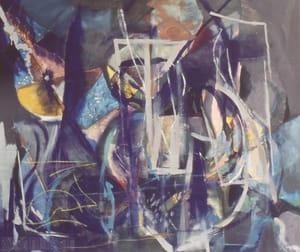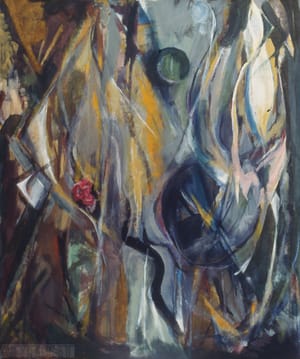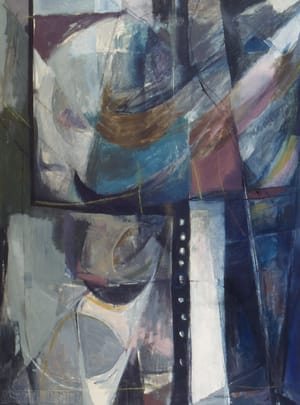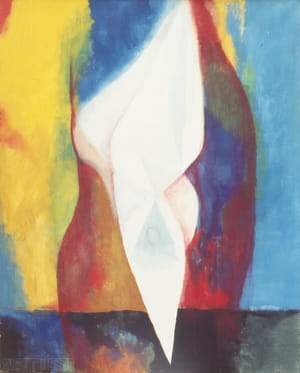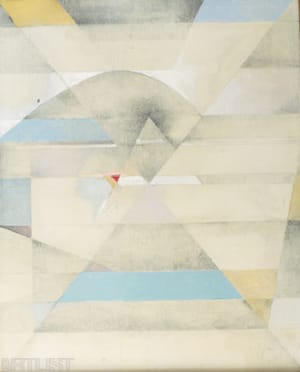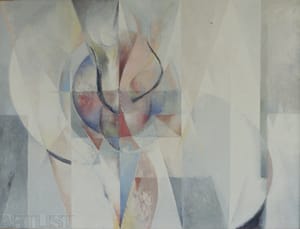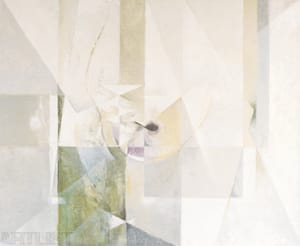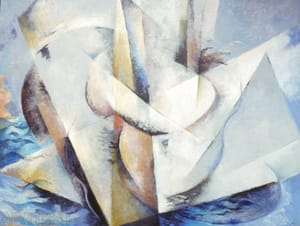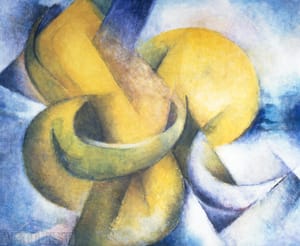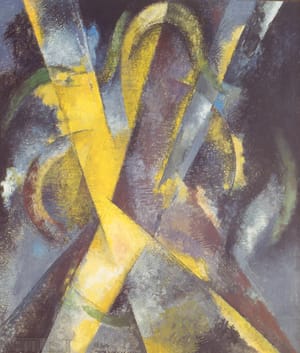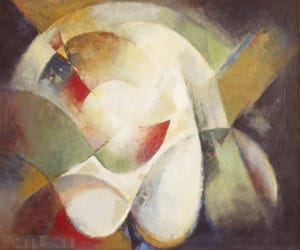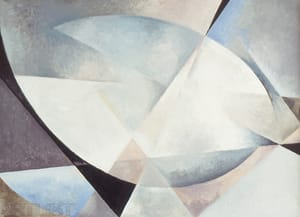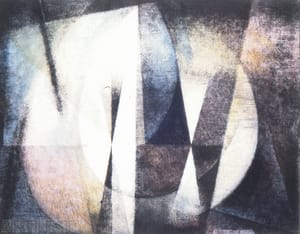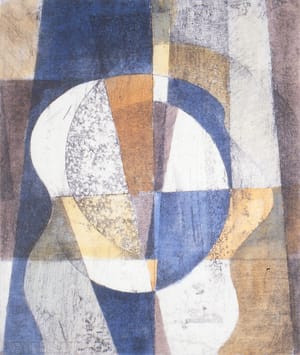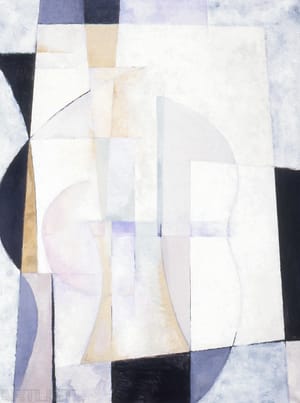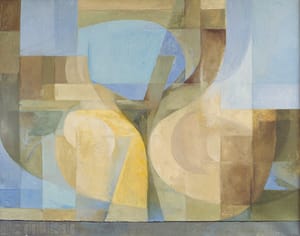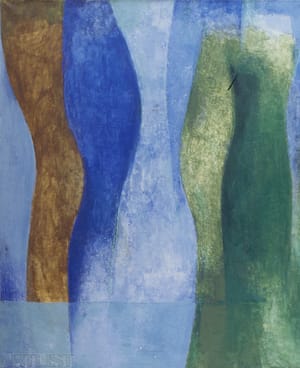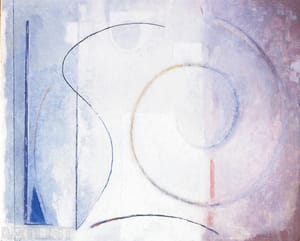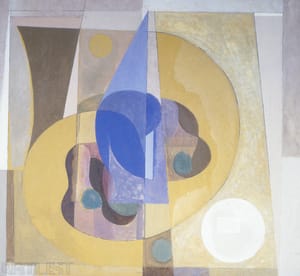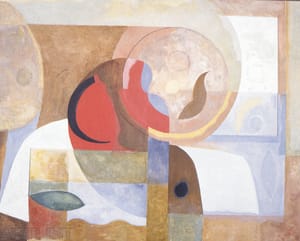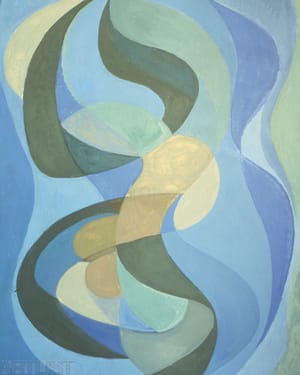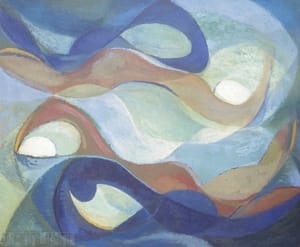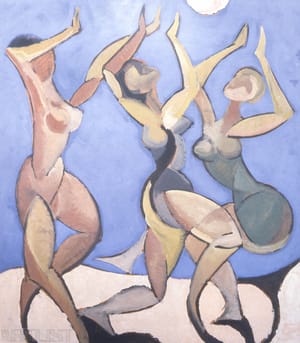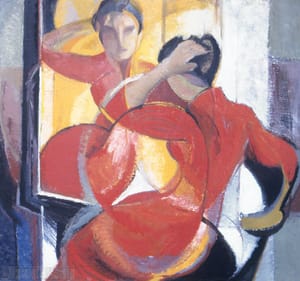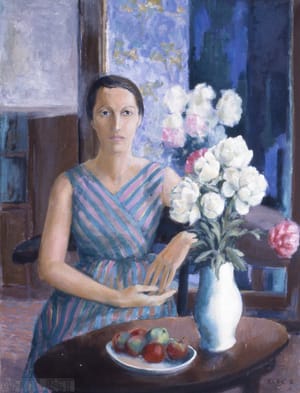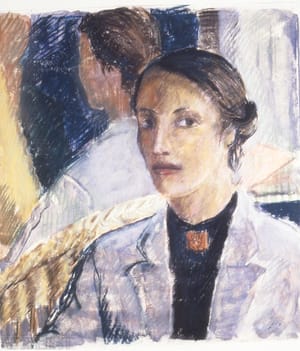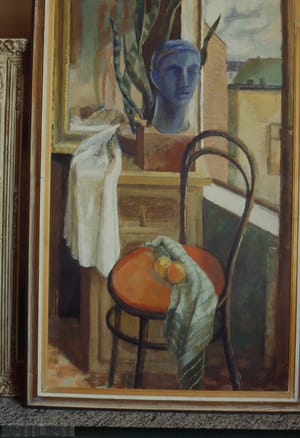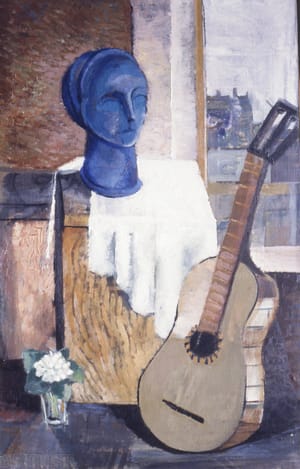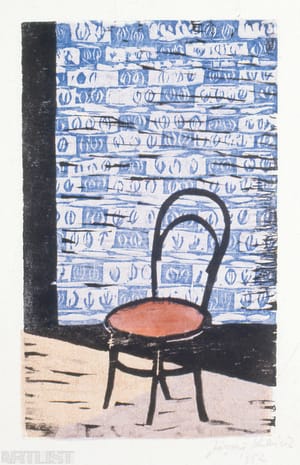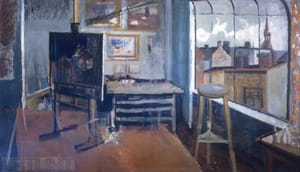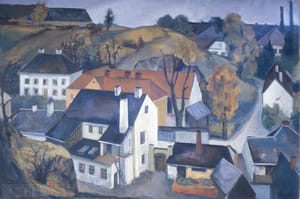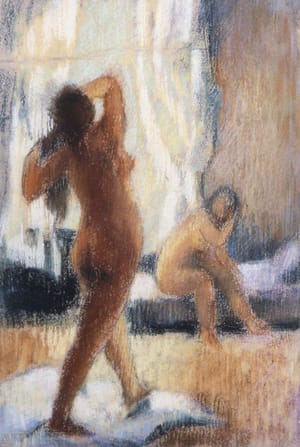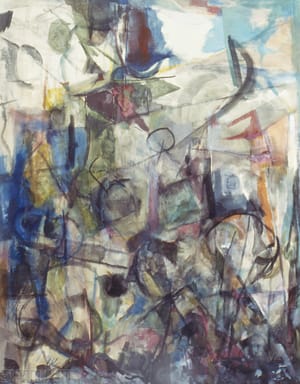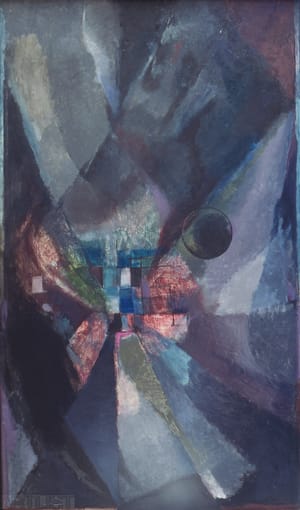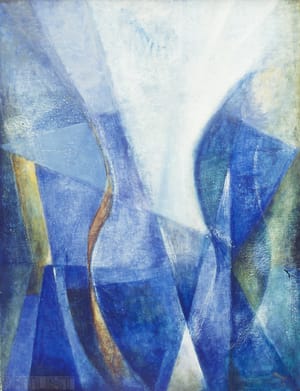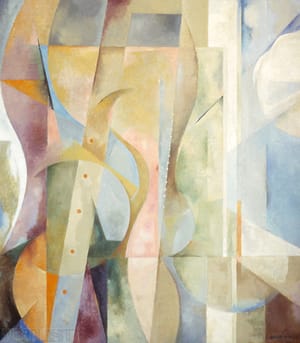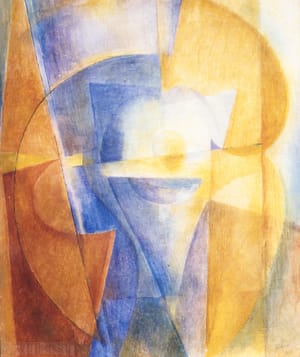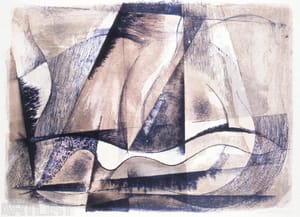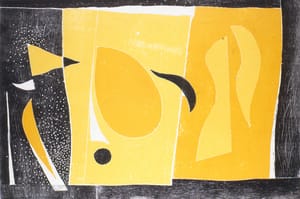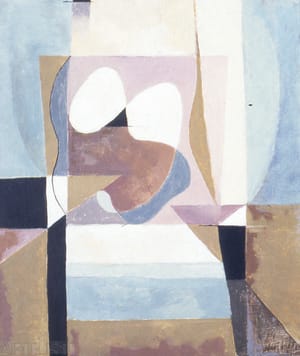- First Name
- Jánuš
- Surname
- Kubíček
- Born
- 1921
- Birth place
- Nové Hrady
- Place of work
- Brno
- Website
- http://www.art-kubicek.cz/art/janus_kubicek.html?lang=cz
http://www.brno.cz/index.php?nav01=2222&nav02=2220&nav03=2447&idosobnosti=62
- Died
- 1993
- Keywords
- CSU Library
- ↳ Find in the catalogue
About artist
Thanks to his father, the sculptor Josef Kubíček, Jánuš Kubíček grew up in the environment of the Brno interwar art scene. Of his father’s friends, he was most influenced by the painter Jan Trampota and the poet Jiří Mahen. Along with Bohumír Matal, Kubíček co-founded the art group Brno 57. From the start of the 1960s onwards he was one of the most prominent figures of the Brno art scene, which remained the case until the end of his life. As well as painting he was involved in printmaking, drawing, collages, and was also the creator of several sculptures for public space. Kubíček was interested in all painterly techniques, including oil tempera and encaustic painting. Like many other artists, he reached a point at which he returned to the very beginning. He sought to discover the primordial basis of art and thus achieve a universal knowledge, which, in his own words, would “update ancient values”.
Kubíček’s family background enabled him to devote himself to painting and drawing from a young age. During the Second World War he studied at the Brno School of Arts and Crafts. In 1943, not yet having reached adulthood, he was a guest at an exhibition organised by the Mánes Association. His paintings from this period are still strongly linked to tradition and do not deviate from other styles of that time. Under the influence of Trampota he painted classical still lifes and city views of both Brno and its immediate surroundings. It was a trip he took to Italy that enabled him to disengage gradually from conservative themes. Kubíček acquired new intellectual motivation and, by gradually abandoning his previous themes, began the search for his own expression and motifs. This release from recurring themes initially represented a dissipation of his energies in various directions: from surrealist collages, such as Nedělní škola flagelantek (1949), to studies of women’s nudes and portraits. Whereas in the previous period it had been the scenery of life that occupied pride of place in his paintings and drawings, now humankind itself came to the foreground, though not for long. The figure gradually disappears from his work over the next few years, to be slowly replaced by another motif that became his lifelong obsession: the artist’s studio. From now on Kubíček will deal with the interior of his workplace, with breaks, until his death. As before in his city views or motionless still lifes, Kubíček created scenes without actors. In addition, the motif of an empty, melancholic timelessness is associated with the visible absence of the main participant, i.e. the painter himself, who in his own studio becomes merely an observer, a visual recorder of time-lapse material.
From the mid-1950s onwards, Kubíček increasingly turned to his French models, namely Paul Cézanne, Henry Matisse and Paul Gauguin. Under the influence of the latter’s work, his thematic scope had already expanded, especially in print sheets in which he was able to free himself up in terms of subject matter. Freer, exotic themes, for example natives in the rainforest or women bathing in a river, allowed him a greater degree of stylisation, e.g. in the prints Lov na tygra / Tiger Hunt (1938) and Koupání / Bathers (1943). Matisse’s influence is most visible at the start of the 1960s in Kubíček’s series of monochrome prints depicting movement and based on stylised female figures shown dancing or playing with a ball (1962). Their curvaceous bodies, modelled on Matisse, reduced to an imprint or outline of a silhouette, were gradually replaced by works based on the principle of analytical Cubism, a sphere Kubíček had been interested in since the 1950s. His admiration for Bohumil Kubišta led him to a technical interest in the decomposition of shapes, expression by means of colour, and the conviction that an image can be independent of the fact that it represents an autonomous reality no matter what we see. Still lifes featuring everyday objects were replaced by paintings with a symbolist subtext, e.g. Zátiší s modrou hlavou II / Still Life with a Blue Head II (1953). The basis of Kubíček’s later work thus consists of a judicious selection and combination of the formal laws of Fauvism, Impressionism and above all Cubism. He gradually arrived at the premise that the subject matter is no longer the main element. Instead, shape, line and colour naturally become the core and driver of the expressive function of the image. We see this transition in the series Hlavy / Heads (1962), inspired by African art, in which the subject is still recognisable, but is adapted to the analytical investigation of form and the liberation of the image from its real model in favour of creating an independent reality beyond our sensory experience. In this way it gets closer and closer to being an endeavour to express a transcendental message through painting, as indeed Kubíček did in the following years.
Kubíček’s formal experiments and exploration of painterly possibilities took place in a period during which art groups could once again be established after the repressive 1950s. Cultural and social life began gradually to recover and, encouraged by the political thaw, artists began to uncouple themselves from classical and traditional ways of painting. Since the early 1960s, Kubíček had tended to simplify and schematise. Subjects were reduced to curves, while lines were beginning to fade in favour of capturing the fleeting moment of motion, thus becoming abstract and intangible, as in the painting Pohyb ve vodě III / Movement in Water III (1963). In addition to recording the movement of flow, Kubíček was fascinated by light and its physical properties, and this led him to create a series of still lifes culminating in 1969, in which the colour white predominates and, as representative of sharp light, absorbs all objects reducing them to mere outlines of unidentifiable things (Zátiší se spirálou / Still Life with Spiral, 1966–1967; Zátiší V. / Still Life V, 1965). From the latter half of the 1960s onwards, Kubíček was also commissioned to design interiors and exteriors of public buildings in a variety of techniques and materials, ranging from mosaic (Býk / Bull, 1965–1966 Ostrava) and relief (Karafiát / Carnation, 1975–1976 Brno), to monumental sculptural works (Vlna / Wave, 1966–1967 Brno).
Under the influence of events in his personal and social life, from the 1970s onwards Kubíček turned increasingly to the art of the past. The mythology and art of antiquity offered him a refuge from stressful events. Images with an existential subtext are overseen by mythical characters such as Laocoön and contain within them a symbolic message regarding guilt, punishment, suffering and missed connections. In these paintings Kubíček sought both a harmony of colours and an abstract morphology of geometric shapes and lines in an effort to render dynamically the laws of painting. During the 1980s, his style became even more relaxed and he created images featuring dark colours and nervous, even manic, brush strokes. Kubíček reflected upon his work theoretically and published a selection of his observations under the title “Dramatický meziprostor” (Dramatic Interspace) in 2004. The most recent exhibition of his work, which took place in the Central Bohemian Gallery Kutná Hora in 2019, was devoted to his work on paper.
- Author of the annotation
- Zuzana Krišková
- Published
- 2020
CV
1958 member of SČVU
1957 founded the artistic group Brno 57
1943 member of SVU Mánes in Prague
1941 School of applied arts, Brno
- Member of art groups not included in ARTLIST.
- 1958 členem SČVU 1957 založil tvůrčí skupinu Brno 57 1943 členem SVU Mánes v Praze
Exhibitions
- Solo exhibitions
-
2013
Jánuš Kubíček: Sexuální objekt podle mého vkusu, Galerie U Betlémské kaple, Praha
Jánuš Kubíček: Uměním unikat stupiditě světa, Topičův salon (2007-), Praha
(Prague)
2007-2008
Jánuš Kubíček: Akvarely a kvaše, Galerie Aspekt, Brno
2007
Vlasta Kubíčková, BAWAG Bank CZ, a.s., Brno
2005
Jánuš Kubíček: Malba, kresba, grafika, Výstavní síň Masné krámy, Plzeň
2004
Jánuš Kubíček: Výběr z grafického díla, Galerie Aspekt, Brno
2003
Jánuš Kubíček: Obrazy, grafika, Gaved - Galerie ve dvoře, Brno
1994
Januš Kubíček: Grafika, Oblastní galerie v Liberci, Liberec
1993
Jánuš Kubíček: Obrazy, kresby, grafika, plastika, Alšova jihočeská galerie v Hluboké nad Vltavou, Hluboká nad Vltavou
1992-1993
Jánuš Kubíček: Obrazy, kresby, grafika, plastika, Galerie výtvarného umění v Chebu, Cheb
1992
Jánuš Kubíček: Obrazy, Mánes, Praha
Jánuš Kubíček: Bilder, Zeichnungen, Graphik, Plastik, Museum Bochum, Bochum
Jánuš Kubíček: Obrazy, kresby, grafika, plastika, Severomoravská galerie výtvarného umění, Ostrava
1991
Jánuš Kubíček: Obrazy, kresby, grafika, plastika, Orlická galerie v Rychnově nad Kněžnou, Rychnov nad Kněžnou
1989
Jánuš Kubíček: Obrazy, Galerie Jaroslava Krále, Brno
1972
Jánuš Kubíček: Obrazy, kresby, grafika, Dům umění města Brna, Brno
1969
Jánuš Kubíček, Dům umění, Olomouc
1960
Jánuš Kubíček: Obrazy - grafika, Slovácké muzeum, Uherské Hradiště
1959
Jánuš Kubíček: Obrazy, kresby a grafiky, Olomouc (Olomouc), Olomouc
1956
Jánuš Kubíček: Práce posledních let, Kabinet umění Kniha, n. p., Brno
1949
Jánuš Kubíček, Dům umění města Brna, Brno
1943
nejmladším hostem výstavy pražského SVU Mánes
- Group exhibitions not included in ARTLIST.
-
2010
Česká koláž ze sbírky Pražské plynárenské, Galerie Smečky, Praha
2008
Soustředěný pohled / Focused View. Grafika 60. let ze sbírek členských galerií Rady galerií České republiky, Oblastní galerie Vysočiny v Jihlavě, Jihlava
2007
Soustředěný pohled / Focused View. Grafika 60. let ze sbírek členských galerií Rady galerií České republiky, Oblastní galerie v Liberci, Liberec
2006
Co se děje? Přírůstky Východočeské galerie z let 1993-2006, Východočeská galerie v Pardubicích, Pardubice
České umění XX. století: 1940-1970, Alšova jihočeská galerie v Hluboké nad Vltavou, Hluboká nad Vltavou
2005
Exkluzivní aukce českého, slovenského a evropského výtvarného umění, Výstava exponátů, Galerie Art Praha, Praha (Prague)
2004
Mezi námi skupinami, Dům umění města Brna, 1. patro, Brno
2002
Na sítnici bouře / Sur la rétine de la tourmente, Oblastní galerie Vysočiny v Jihlavě, Jihlava
2000
90 let Domu umění města Brna, Dům umění města Brna, Brno
Umění zrychleného času. Česká výtvarná scéna 1958 - 1968, Státní galerie výtvarného umění v Chebu, Cheb
Ozvěny kubismu, Dům U Černé Matky Boží, Praha
1999
Kolorismus v českém výtvarném uimění, Galerie výtvarného umění, Litoměřice
1998
Záznamy, dojmy, sny 2, Galerie z ruky, Křížovice, Doubravník
1997
Z nesbírky Marcely Pánkové, Galerie Hermit - Studio 600, Praha
1995
Přírůstky sbírek 1989 - 1994, Oblastní galerie Vysočiny v Jihlavě, Jihlava
1991
Czeska sztuka 2. połowy XX wieku ze zbiorów Galerii Sztuk Plastycznych w Ostrawie, Muzeum Górnośląskiego w Bytomiu, Bytom
České umění 2. poloviny 20. století ze sbírek Galerie výtvarného umění v Ostravě, Dům umění, Ostrava
1988
České zátiší 20. století, Alšova jihočeská galerie v Hluboké nad Vltavou, Hluboká nad Vltavou
1981
České malířství a sochařství 1900 - 1980, Alšova jihočeská galerie v Hluboké nad Vltavou, Hluboká nad Vltavou
1979
České umění 1945/1975, Alšova jihočeská galerie v Hluboké nad Vltavou, Hluboká nad Vltavou
1969
České umění 1945/1975, Alšova jihočeská galerie v Hluboké nad Vltavou, Hluboká nad Vltavou
1966-1967
Brněnská bilance, Mánes, Praha (Prague)
1965
Grupa Brno 57, Towarystwo przyjaciol sztuk pieknych w Krakowie, Krakov (Kraków)
Grafika 65, Vlastivědné museum, Písek
1964
Brno 57, Galerie Československý spisovatel, Praha (Prague)
1963
Konfrontace výtvarných skupin, Dům umění města Brna, Brno
1962-1961
Československé výtvarné umění za lepší zítřek, Dům umění, Zlín
1958
Město očima soudobých malířů, Galerie Českého fondu výtvarných umění, Praha (Prague)
1958-1959
Umění mladých výtvarníků Československa 1958. Obrazy a plastiky, Jízdárna Pražského hradu, Praha (Prague)
1957-1958
Jánuš Kubíček, Bohumír Matal, Vladislav Vaculka, Vladimír Vašíček, Galerie mladých, U Řečických, Praha 1 (Prague)
1968
Koláž v českém výtvarném umění, Malinův dům, Havlíčkův Brod
- Collections
- Moravská galerie v Brně Národní galerie v Praze
Monography
- Monography
ZEMINA J.: Jánuš Kubíček: Uměním unikat stupiditě světa, katalog výstavy, Topičův salon, Praha, 2013 HLUŠIČKA J./KUBÍČEK A.: Jánuš Kubíček, Akvarely a kvaše, Praha 2007 HLUŠIČKA J./KUBÍČEK A.: Jánuš Kubíček, Kresba a grafika, Praha 2004 KUBÍČEK A.: Jánuš Kubíček, Praha 1998 RULÍŠEK H.: Jánuš Kubíček: Koláže, katalog výstavy, Dům kultury ROH, České Budějovice, 1985 KUDĚLKA Z.: Jánuš Kubíček: Obrazy, katalog výstavy, Galerie Jaroslava Krále, Brno, 1968 SPIELMANN P.: Jánuš Kubíček: Obrazy-grafika, katalog výstavy, Slovácké muzeum, 1960 KUDĚLKA Z.: Jánuš Kubíček: Práce z posledních let, katalog výstavy, Kabinet umění, Brno, 1956 KRSEK I.: Jánuš Kubíček, katalog výstavy, Dům umění města Brna, 1949
- Personal texts not included in database
ZEMINA J.: Jánuš Kubíček: Uměním unikat stupiditě světa, katalog výstavy, Topičův salon, Praha, 2013HLUŠIČKA J./KUBÍČEK A.: Jánuš Kubíček, Akvarely a kvaše, Praha 2007HLUŠIČKA J./KUBÍČEK A.: Jánuš Kubíček, Kresba a grafika, Praha 2004KUBÍČEK A.: Jánuš Kubíček, Praha 1998RULÍŠEK H.: Jánuš Kubíček: Koláže, katalog výstavy, Dům kultury ROH, České Budějovice, 1985KUDĚLKA Z.: Jánuš Kubíček: Obrazy, katalog výstavy, Galerie Jaroslava Krále, Brno, 1968SPIELMANN P.: Jánuš Kubíček: Obrazy-grafika, katalog výstavy, Slovácké muzeum, 1960KUDĚLKA Z.: Jánuš Kubíček: Práce z posledních let, katalog výstavy, Kabinet umění, Brno, 1956KRSEK I.: Jánuš Kubíček, katalog výstavy, Dům umění města Brna, 1949
